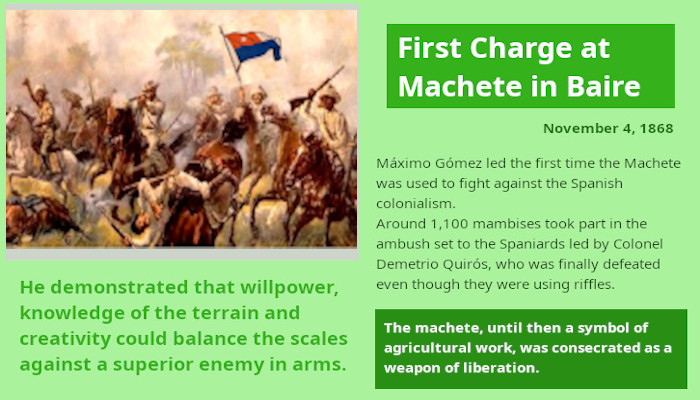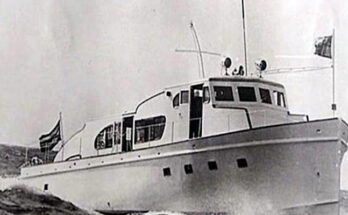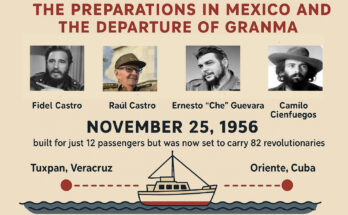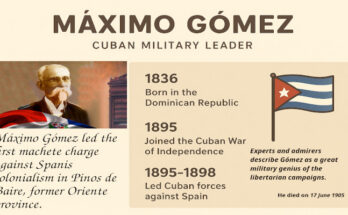In the early hours of November 4, 1868, the fields of Pino de Baire, in the former province of Oriente, became the scene of an ambush that would change Cuban military history forever. After the Yara Cry, the Liberation Army, still young and poorly armed, faced a Spanish column of more than 700 men under the command of Colonel Demetrio Quirós, advancing from Santiago de Cuba towards Bayamo.
Máximo Gómez, then sergeant of the Liberation Army, led a force of approximately 1,100 mambises, determined to stop the enemy advance. Taking advantage of the wooded terrain and the surprise, the Cubans launched on the peninsular with an unprecedented tactic: the charge to the machete. This maneuver, born of necessity and ingenuity, consisted in a frontal attack hand-to-hand, where the machete -an agricultural tool turned into a weapon- became a symbol of the struggle for independence.
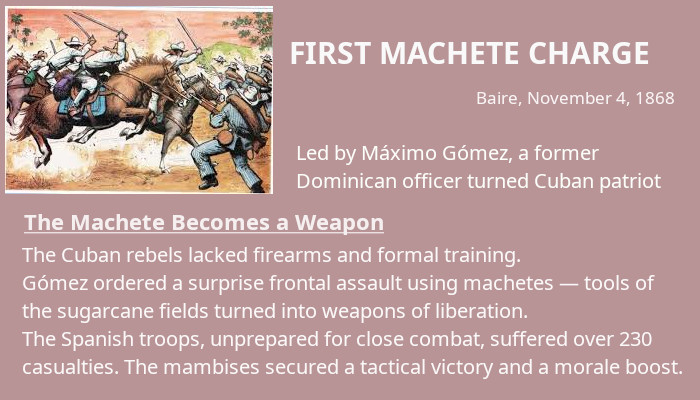
The crash was brutal. The Spaniards, accustomed to conventional warfare, could not resist the ferocity of the attack. Confusion, fear and lack of preparation for this type of combat caused 233 casualties in their ranks, while the mambises achieved a tactical and moral victory that would resonate throughout the island.
The First Charge to the Machete was not only a military victory: it was the birth of a tactic that would be repeated in multiple battles during the wars of independence. The machete, until then a symbol of agricultural work, was consecrated as a weapon of liberation. And Máximo Gómez, with his audacity and strategic vision, began to forge his legend as one of the great leaders of the Cuban cause.
This episode, although brief in duration, had a lasting impact. He demonstrated that willpower, knowledge of the terrain and creativity could balance the scales against a superior enemy in arms. Since then, the load of the machete became a rallying cry, a recurring strategy, and an emblem of the struggle for freedom.

